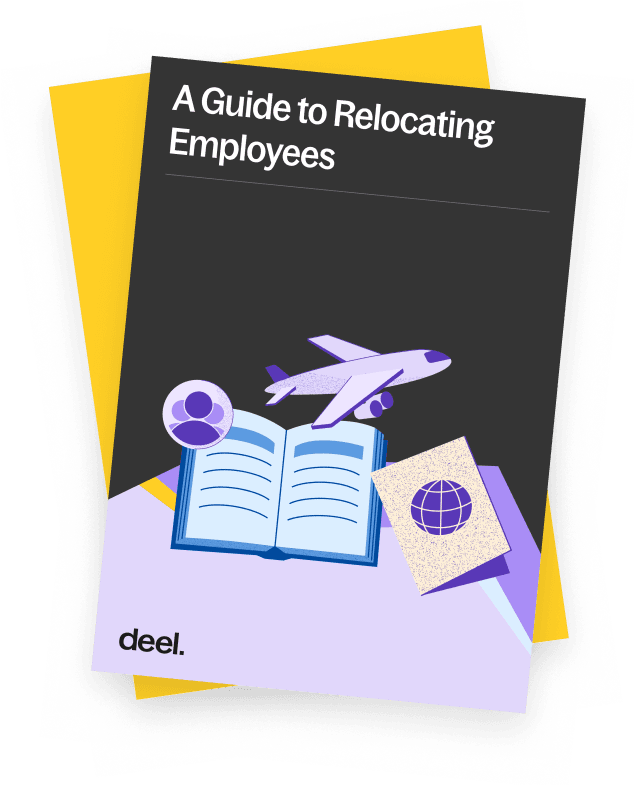Remote Work Glossary
- Results for "undefined"
Table of Contents
Why is workforce mobility important?
How is workforce mobility changing?
Best practices for workforce mobility strategies
What is workforce mobility
Workforce mobility describes the ability of a company’s workforce to move from one location to another. Workforce mobility falls under a company’s broader workforce planning strategy and human resources operations.
Since the pandemic and the rise of remote work, the mobile workforce has become more prominent and an important part of company culture. More companies are implementing HR mobility solutions and hiring mobility professionals to manage the process.
Workplace mobility is often facilitated by technology, such as mobile devices, laptops, smartphones, and cloud-based software, which allows workers to access information and communicate with colleagues from anywhere.
Why is workforce mobility important?
As global mobility becomes the norm, businesses realize the benefits of embracing employee mobility.
Consider the following advantages:
- Attract and retain top global talent as employees value the opportunity to advance their careers and gain new experiences
- Improve productivity by allowing employees to work from anywhere, at any time, with the option to deploy employees where needed most
- Maintain business continuity in the event of disruption by offering flexible work arrangements
- Save costs for both employers and employees by cutting back on real estate expenses and saving on commuting costs
- Boost employee experience by offering improved work-life balance for remote workers
How is workforce mobility changing?
Traditionally, workforce mobility programs included company-led moves and relocations such as permanent domestic and international moves, short-term assignments (STAs), and long-term assignments (LTAs).
As the business landscape and worker preferences continue to evolve, the mobile workforce is changing. Hand-raiser moves have become more popular. This type of move occurs when an employee volunteers to move (rather than being requested). Employees may request to relocate away from expensive and densely-packed cities, to move closer to family and friends, or to experience a new culture.
There is an increased focus on why companies should relocate employees and how to make the process as lean as possible. For example, not all employees need a household goods shipment. Instead, flexibility is prioritized for quick changes.
Employment relocation packages are designed for relocating employees, considering various details from performance metrics to revised salaries to accommodate a change in the cost of living.
Virtual assignments are another option, where employees remain in their home country while performing their role virtually.
Best practices for workforce mobility strategies
Workforce mobility strategies aim to support talent acquisition, develop talent and leadership, and support global operations.
A company's HR team should work with management (and stakeholders) to develop and approve a streamlined talent strategy. The plan is especially important for global organizations and small organizations that work in remote capacities.
Consider the following best practices for workforce mobility strategies to be shared with assignees.
Create clear policies
Workforce mobility policies are important to manage and support mobile workers effectively. Policies outline the expectations for both employees and employers regarding mobility, including technology use, communication protocols, and work hours. Outline the eligibility for participating in a mobility program and establish the expectations and requirements for the role to prevent misunderstandings.
Leverage technology
Technology plays an important role in enabling and supporting a mobile workforce. Consider cloud-based applications, virtual-meeting software, and various mobile devices to connect workers. Technology makes it easier to collaborate and work as a team from different locations by facilitating access to information and resources at all hours of the day. Employers can also use technology to manage remote performance, offering insights into productivity and the effectiveness of systems. There are various service providers to explore, offering value to your global workforce.
Implement 1:1 meetings
Isolation and lack of accountability are challenges to mobile work, but 1:1 meetings allow managers and employees to connect and discuss work-related topics such as goals, challenges, and progress updates. Employers can provide feedback to workers, and employees have an opportunity to ask questions or raise concerns. Regular meetings contribute to a feeling of connection and collaboration.
Run development-focused performance reviews
Growth and development are becoming increasingly important in the modern working world, and development-focused performance reviews allow managers and employees to discuss job performance, goals, and growth opportunities. By sharing feedback and assessing work based on measurable goals rather than attendance, the quality of work is prioritized. These reviews are also a great time to discuss future development and create a plan to help remote workers achieve their goals.
Redefine recruitment processes
It’s become normal for employers to expand their recruitment efforts to a global talent pool. The approach demands a change to the recruitment process and may involve leveraging technology tools, revising job descriptions, and providing resources and support to remote workers during the onboarding process.
